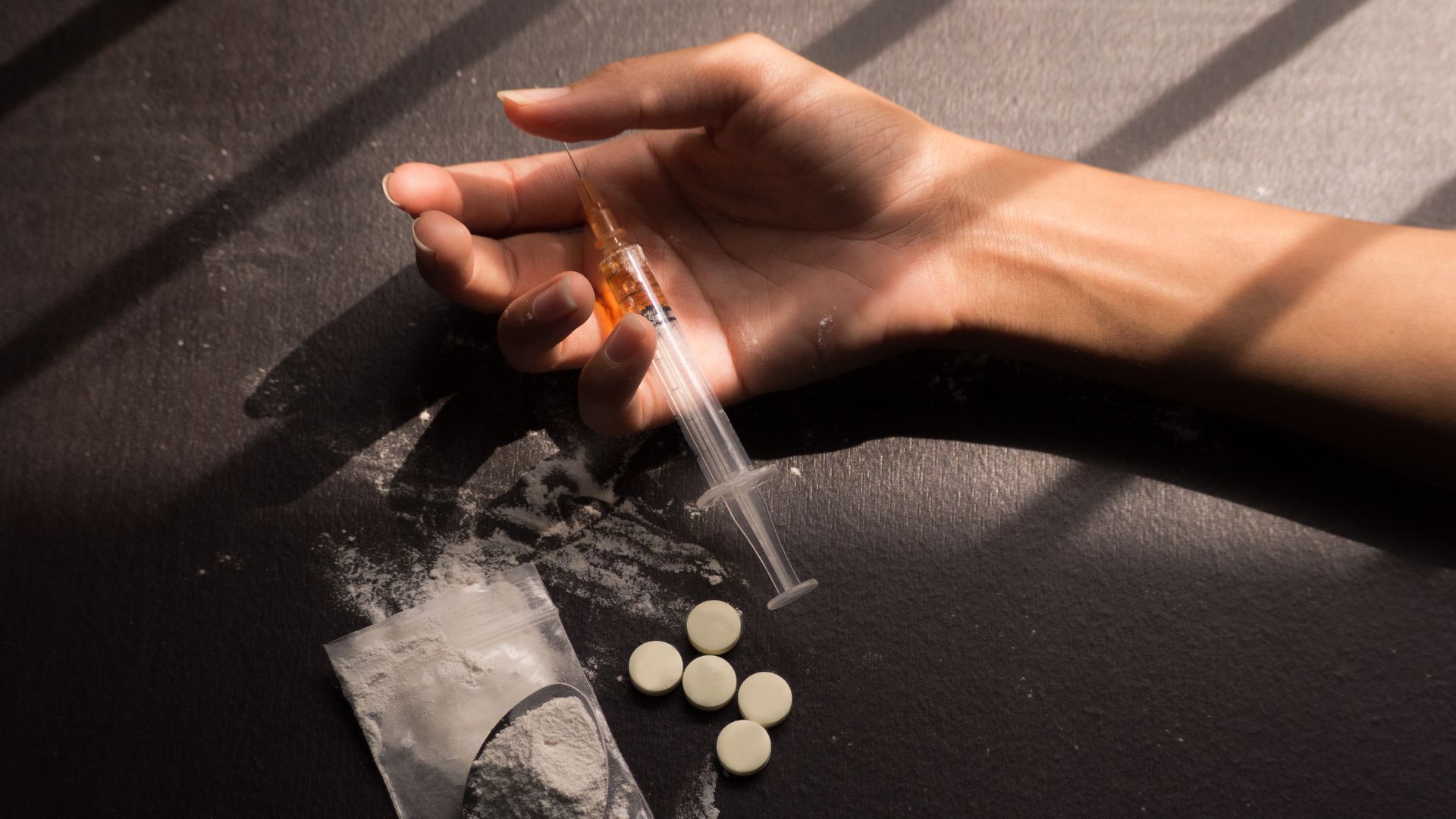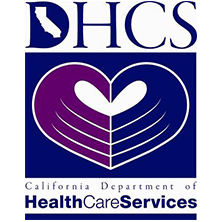SUBSTANCE ABUSE
Heroin
Heroin is universally known as an extremely addictive and harmful drug, but it is lesser known that heroin is actually made from morphine, which is a substance that occurs naturally in the seed pod of opium poppy plants. Opium poppy plants typically grow in Southeast and Southwest Asia, Mexico, and Colombia. Heroin use can lead to addiction treatment in a drug rehab facility. Addiction might also require therapy and other interventions.
Heroin comes in either a white or brown powder, or a black sticky substance known as black tar heroin. Pure heroin is typically found as a white powder and can be snorted or smoked. Impure heroin is a black sticky substance that is typically dissolved, diluted, and injected into veins, muscles, or under the skin. Heroin is illegally made and sold, and it is not considered safe to use.

Common Questions About Heroin
WHAT CLASS OF DRUGS DOES HEROIN BELONG TO?
Heroin belongs to the group of drugs called opioids. Opioids are pain medications that work by blocking sensations of pain that are sent to the brain. Some opioids, such as heroin, are illegal. Others, such as oxycodone, are legal and prescribed for moderate to severe pain. Opioids can be derived naturally from the opium plant, or they can also be made synthetically.
WHAT DOES USING HEROIN FEEL LIKE?
Heroin induces feelings of warmth, relaxation, detachment, and a decrease in anxiety. It is a powerful sedative and has analgesic properties that can help with pain. The effects appear rapidly and, depending on the dosage and method of ingestion, the effects can last for varying amounts of time. Typically, the effects last for a couple of hours.
CAN USING HEROIN ONCE CAUSE ADDICTION?
Using heroin one time will not cause dependency. However, trying it once can lead to subsequent heroin usage, which can then lead to addiction. To become physically dependent on a drug (meaning that a body needs the drug to function), drug use would need to be repeated over a period of time. Using heroin one time will neither cause physical dependence on the drug nor will it lead to addiction. Data shows that approximately 80% of people who try heroin do not become dependent on it.
HOW MUCH DOES HEROIN COST?
Heroin is a popular drug of choice because it tends to be cheaper than other prescription opioids (such as oxycodone). As of 2017, a gram of heroin cost about $307.5 Individuals using heroin will often spend $150 to $200 a day, which adds up to about $53,000 a year. The financial burden of obtaining it can lead to further problems because someone struggling with addiction will typically have trouble remaining employed. This often leads to using illegal means of making money to support the drug use, which can lead to jail time. The social cost of using heroin is apparent in the deteriorating relationships a person with a heroin dependency experiences with family, friends, work and school.
IS HEROIN ADDICTIVE?
Heroin is highly addictive. It is easy to develop a tolerance to it, meaning it would require increasingly larger doses to achieve the same effects as when your use first began. The likelihood of developing an addiction increases after prolonged and repeated use.
WHAT ARE THE RATES OF USE?
According to the 2018 National Survey on Drug Use and Health, approximately 808,000 people over the age of 12 used heroin at some point during 2018.2 Broken down into age groups, approximately 10,000 of these people were adolescents ages 12 to 17. 157,000 were young adults aged 18 to 25, and 641,000 were adults over the age of 26.2 While there are many drugs that tend to be used mainly by adolescents and young adults, heroin tends to be used primarily by adults.
While it’s use was steadily increasing during the 2000s, heroin use has been decreasing since 2016. In 2015, approximately 828,000 people over the age of 12 had used heroin. In 2016, this number grew to 948,000.3 It decreased in 2017 to approximately 886,000 users and dropped to 808,000 people in 2019.4
WHERE IS IT ON THE DRUG SCHEDULE?
Heroin is a schedule I drug, meaning that the federal government has determined that it’s highly addictive and has no acceptable medical use. In other words, while it does have pain-relieving properties, is it too dangerous and poses too high a risk for abuse and addiction for it to be deemed medically useful.
WHAT IS THE HISTORY OF HEROIN?
For more than five thousand years, the opium poppy plant has been used for a variety of medicinal purposes. Most commonly, heroin has been used to treat pain. In 1874, heroin was first synthesized from morphine.1 From 1898 to 1910, the German pharmaceutical company Bayer marketed heroin as a non-addictive replacement for morphine and as a cough suppressant medication.1 In 1914, as the harms of addiction became increasingly known, the U.S. government introduced the Harrison Narcotics Act, which restricted the use of heroin. In 1924, the Heroin Act made heroin illegal.1
Effects of Heroin
What are the Short-term Effects?
The instant effect of taking heroin is a pleasurable feeling that is often referred to as a ‘rush.’ Some of the common short-term effects include:
•Dry mouth
•Falling in and out of consciousness and semi-consciousness
•Heavy feeling in the arms and legs
•Impaired mental functioning
•Nausea
•Severe itching
•Slower breathing
•Vomiting
•Warm flushing of the skin
Slang Terms for Heroin
•Hell dust
•Horse
•Smack
•White junk
•China
•Tar
•Big H
•Black eagle
•Black tar
•Brown sugar
•Dope
•H
•White China
•Chinese Food
What are the Long-term Effects?
Long-term use can lead to experiencing the following effects:
•Abscesses
•Changes in the physiology of the brain
•Constipation
•Depression
•Drug tolerance
•HIV (from sharing needles)
Infection of the heart lining and valves
•Irregular menstrual cycles
•Lung issues
•Sexual dysfunction
•Antisocial personality disorder
•Collapsed veins (from injecting heroin)
•Damaged tissue inside the nose (from sniffing or snorting heroin)
•Drug dependence
•Hepatitis (from sharing needles)
•Imbalances in neuronal and hormonal systems
•Insomnia
•Liver and kidney disease
•Pneumonia
•Stomach cramping
What are the Potential Risks of Injecting Heroin?
One of the risks of heroin use that is unique to injecting it is the potential to contract HIV and hepatitis C through the sharing of unclean needles or other paraphernalia. Individuals who use inject oftentimes share needles, increasing the risk of spreading HIV and hepatitis C. Hepatitis C is the most common blood-borne infection in the United States.
What are the Effects of Using Heroin During Pregnancy?
Heroin is not safe to use during pregnancy as it can result in neonatal abstinence syndrome (NAS). NAS occurs as a result of heroin passing through the placenta to the fetus during pregnancy, causing the baby to become dependent on it.
Common Side Effects of Using Heroin During Pregnancy Consist of:
•Excessive crying
•Fever
•Irritability
•Seizures
•Slow weight gain
•Tremors
•Diarrhea
•Vomiting
•Death
NAS requires hospitalization and treatment with medication such as morphine to relieve the symptoms. The medication is gradually lowered in dose until the baby can adjust to being opioid-free.
Common Heroin Withdrawal Symptoms
If heroin has been used repeatedly over a long period of time, a dependency has likely been developed on the drug. If its use suddenly stops, it is likely to cause withdrawal symptoms. Withdrawal symptoms occur when the body has gotten used to the presence of a substance and has become dependent on it. The body responds to the absence of the substance with various symptoms. Symptoms of heroin withdrawal include:
•Abdominal cramping
•Anxiety
•Cold flashes with goosebumps (“cold turkey”)
•Diarrhea
•Insomnia
•Problems sleeping
•Sweating
•Vomiting
•Agitation
•Bone pain
•Cravings
•Dilated pupils
•Muscle aches
•Restlessness
•Uncontrollable leg movements (“kicking the habit”)
•Yawning
Can You Overdose On Heroin?
Yes, it is possible to overdose. An overdose occurs when too much heroin enters the body, causing a life-threatening reaction or death. Taking a large amount of it at once can slow down or stop breathing, decreasing the amount of oxygen in the brain. This condition is called hypoxia, and it can have short and long term mental effects and effects on the nervous system, such as a coma or permanent brain damage.
How to Treat an Overdose
If a person is experiencing an overdose, it is important to be treated with naloxone right away to reverse the effects of the overdose. Naloxone is a medication that is used to treat opioid overdoses by blocking the effects of heroin and other opioids on the brain. Naloxone helps normalize breathing, but more than one dosage might be necessary. After administering naloxone, it is important to go to the emergency room immediately in case further treatment is needed.
Naloxone is administered as an injectable liquid or as a nasal spray. Naloxone can be administered by family or friends (not just medical personnel), and in some states, pharmacists can provide naloxone without a prescription.
What Happens if Heroin is Mixed with Alcohol or Other Drugs?
While taking heroin alone is dangerous, mixing it with other drugs can increase the potential for harm. The majority of people who use heroin, tend to use at least one other drug as well, and the majority of overdoses occur when drugs are combined. Some of the most dangerous drug combinations are:
Heroin & Alcohol
Combining heroin and alcohol can increase the risk of overdose, coma, and death because both substances lead to shallow breathing, lowered blood pressure, lowered heart rate, and sedation.
Heroin & Benzo’s
Benzodiazepines, such as Xanax and Valium, are used to treat conditions such as anxiety and insomnia. It is dangerous to use benzodiazepines with heroin because both drugs slow down breathing. Using both substances together can also make naloxone less effective when using it for an overdose.
Heroin & Cocaine
Using cocaine and heroin together is very dangerous as cocaine is a stimulant, and heroin is a depressant meaning that they have opposite effects on the central nervous system. This can cause problems with breathing and heart rate which can result in an overdose.
Based on the interactions of these two drugs with one another, there are some specific physical and mental effects that occur when mixing them. For example, generally, when a stimulant drug is added to an opioid analgesic, the painkilling effect can be enhanced while the individual will not feel quite as much fatigue as would occur with the painkiller alone. Effects include but are not limited to:
•Intense euphoria rush
•Normal to increased respiratory rate
•Increased heart rate
•Relaxation and release of inhibitions
What Happens During a Heroin Detox?
A detox is the first step of treatment for heroin addiction. A detox stops the drug use, and then other treatments can tackle the underlying issues that may have led to addiction. This would include building better habits and developing a healthy lifestyle that will help a person recover and avoid relapse.
A heroin detox typically involves being medically monitored while stopping the use of the drug while monitoring and controlling withdrawal symptoms. While it is possible to detox without assistance, it is very difficult and unpleasant, particularly without medical help.
Often times, a medical detox will include the use of medication to reduce the negative physical or psychological effects of withdrawal. Medications such as methadone or buprenorphine can help to decrease the severity of withdrawal symptoms and can help to avoid a relapse. Because it is difficult to avoid using heroin to stop the unpleasant withdrawal symptoms, medically supervised detoxes are recommended for long term recovery.
Medication Assisted Therapy (MAT)
While medications might be introduced during the detox stage, they will often still be used as part of a treatment plan to manage withdrawal symptoms, cravings, and to avoid a risk of relapse. Medications that might be used for the treatment of heroin are:
Methadone
Methadone is a long-acting synthetic opioid agonist medication. That means that it is a longer-acting opioid that replaces the shorter-acting opioid (heroin) to reduce withdrawal symptoms. An agonist medication is one that replaces the effects of another substance (typically a more harmful substance). Methadone is taken orally in a solution or as a tablet, and the effects last from 24-36 hours. Those who are on methadone have to visit the clinic every day for a dosage and typically cannot take doses of methadone home, making it a medically controlled process. Methadone can be taken for a period of days, weeks or months depending on each individual and how the withdrawal process is going. To stop methadone use, the dosage is decreased over time to avoid withdrawal symptoms as methadone is also an opioid.
Buprenorphine
Like methadone, buprenorphine is a synthetic opioid that is taken orally (under the tongue) that helps to minimize withdrawal symptoms. Buprenorphine only partially mimics the effects of heroin, allowing it to help with withdrawal symptoms without having a high risk of abuse. Substances like methadone and buprenorphine are also opioids and therefore carry a risk of misuse. Because taking buprenorphine has a lower chance of experiencing euphoric effects, it is harder to misuse and, therefore might be a better option than other opioid agonists.
Naltrexone
Naltrexone is another type of opioid agonist that works by blocking opioid receptors. It is not addictive like methadone and buprenorphine, but it must be taken regularly according to directions, or it will be ineffective. It is taken either every day by the mouth or as a monthly injection. Naltrexone is often used in the long term after the initial detox has been completed.
Suboxone
Suboxone is a combination medication comprised of both buprenorphine and naloxone. It was designed specifically to discourage misuse. When taken as instructed, buprenorphine helps with the management of withdrawal symptoms. However, if Suboxone is crushed up in an attempt to be injected, it causes very unpleasant withdrawal symptoms.
Behavioral Therapy
In most cases, addiction treatment involves more than just stopping the use of a certain substance or substances. There are usually underlying reasons for why substance use began, or there are co-occurring disorders such as depression or anxiety that may play a role in addiction. For that reason, it is important to address each issue that plays a role in addiction rather than just focusing on the substance itself.
Behavioral therapies include individual therapy, group therapy, or family therapy. Examples are cognitive behavioral therapy, which can occur on a one-to-one basis with a psychotherapist or in a group setting. Cognitive-behavioral therapy focuses on thought patterns and behaviors surrounding drug use and ways that an individual can adapt their thinking and behavior to reflect recovery.
Another group therapy option is Heroin Anonymous, which is based on the principles of Alcoholics Anonymous and revolves around the peer support of people going through the same process. There are a variety of treatment facilities where behavioral therapy can occur. They include:
Outpatient Treatment Facilities
Outpatient treatment facilities are the most popular treatment option in the United States. In an outpatient treatment facility, the patient lives at home and travels to the facility for treatment. This can take place over a period of weeks, months, or even years.
Inpatient Treatment Facilities
Inpatient treatment facilities are used less than outpatient facilities because they require the patient to stay overnight for up to 28 days. Inpatient treatment facilities offer more structure and support for individuals and are typically located in hospitals or other medical facilities where patients receive more care. After about a month, patients might be transferred to outpatient treatment facilities or residential treatment facilities.
Residential Treatment Facilities
Residential substance use treatment facilities are facilities where people live full-time for a longer period of time because they require more intensive structure and support for recovery. These treatment facilities offer assistance for co-occurring problems outside of just substance use.
Resources
- http://www.drugpolicy.org/sites/default/files/heroinfacts_03_18_0.pdf
- https://www.samhsa.gov/data/sites/default/files/cbhsq-reports/NSDUHNationalFindingsReport2018/NSDUHNationalFindingsReport2018.pdf
- https://www.samhsa.gov/data/sites/default/files/NSDUH-FFR1-2016/NSDUH-FFR1-2016.pdf
- https://www.samhsa.gov/data/sites/default/files/cbhsq-reports/NSDUHFFR2017/NSDUHFFR2017.pdf
- https://www.statista.com/chart/18534/heroin-retail-street-prices-in-selected-countries/




